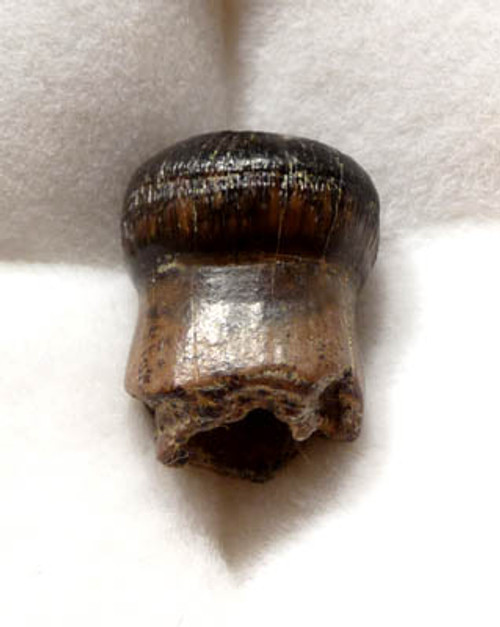Product Description
SEE MORE MISCELLANEOUS DINOSAUR AND REPTILE FOSSILS
Collected from the famous Hell Creek Formation of Northwestern U.S.A., this is a group of 40+ loose teeth of Champsosaurus sp.. The loose teeth are all with excellent preservation, and were collected at a micro site that was once a prehistoric swamp during the Cretaceous of the Hell Creek Formation. This was the time of the most famous dinosaurs of North America such as Tyrannosaurus rex and various dromaeosaur (raptor) dinosaurs. Champsosaurus lived along side these iconic dinosaurs, possibly becoming a food source to some of Hell Creek's meat-eating beasts, should they venture into the swampy regions where Champsosaurus lived.
HISTORY
Champsosaurus is an extinct genus of crocodile-like choristodere reptile, known from the Late Cretaceous and early Paleogene periods of North America and Europe (Campanian–Paleocene). The name Champsosaurus is thought to come from champsai, said in an Ancient Greek source to be an Egyptian word for "crocodiles", and sauros, Greek for "lizard". The morphology of Champsosaurus resembles that of gharials, with a long, elongated snout. It was native to freshwater environments where it likely preyed on fish, similar to living gharials. Most species grew to about 1.50 m (5 ft) long,[12] though Champsosaurus gigas, the largest species, reached 3–3.5 m (10–12 ft) in length.
Champsosaurus is thought to have been highly specialized for aquatic life. Expanded temporal arches anchored powerful jaw muscles, and an elongated snout allowed Champsosaurus to prey on fish akin to modern gharials, with these adaptions allowing rapid movement of the head and jaws for prey capture. Champsosaurus may have fed by laterally sweeping its head, using its slender jaws to grab individual fish from shoals, akin to how modern gharials feed.
Fossils of Champsosaurus have been found in North America (Alberta, Saskatchewan, Montana, New Mexico, Texas, Colorado, and Wyoming) and Europe (Belgium and France), dating from the Upper Cretaceous to the late Paleocene.
 US DOLLAR
US DOLLAR
 EURO
EURO
 AUSTRALIAN DOLLAR
AUSTRALIAN DOLLAR
 CANADIAN DOLLAR
CANADIAN DOLLAR
 POUND STERLING
POUND STERLING














